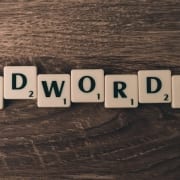Listening Biases: how we restrict opportunity
I got to the gym yesterday only to find that my regular treadmill had been replaced by a new-fangled computer machine thing. I asked the young woman next to me how to start the damn thing as it wasn’t obvious. Here was the conversation:
SDM: Where’s the start button on this thing?
Woman: Over there. You’ll want to start on 2.3 miles and…
SDM: Thanks for showing me. I’m good now. Thanks.
Woman: You’re starting too high! Plus, you’ll want to put it at an incline of 1% to start, then…
SDM: No. Really. I’m good.
Woman: I’m telling you the right way to do this! I’m a professional trainer! I know what I’m talking about!
SDM: I’m sure you do. But I’m good. Thanks.
Woman: What’s your problem, lady??? You asked me for my advice! I’m just responding to your question! I’M A PROFESSIONAL!
That woman converted my simple request to start a machine into a request for her expertise – what she wanted to hear rather than what I meant – and she was so out of choice (see article on How vs What) that she couldn’t recognize my attempt to disengage from the conversation – three times! But we all do this sort of thing.
Biases
Far too often, we shove what someone means to convey into the small box of what we’re listening for and end up tangling or misdirecting conversations – certainly limiting possible outcomes. We’re actually filtering what we hear through our unconscious biases. Let me introduce you to some of the more common ones out of the hundreds of recognized biases:
Confirmation bias: we listen to get personal validation, often using leading questions, to confirm to ourselves that we’re right; we seek out people and ideas to confirm our own views and maintain our status quo.
Expectation bias: we decide what we want to take away from a conversation prior to entering, causing us to only pick out the bits that match and disregarding the rest; we mishear and misinterpret what’s said to conform to our goals.
Status quo bias: we listen to confirm that we’re fine the way we are and reject any information that proves we may be wrong.
Attention bias: we ignore what we don’t want to hear – and often don’t even hear, or acknowledge, something has been said.
Information bias: we gather the information we’ve deemed ‘important’ to push our own agendas or prove a point. When used for data analysis, we often collect information according to expectation bias and selection bias. (This biases scientific and social research, and data analysis.)
And of course, we all have a Bias Blind Spot: we naturally believe we’re not biased – just Right! And anyone that doesn’t believe we’re Right is Wrong.
Our Brains Bias Autonomously
When researching my book on how to close the gap between what’s said and what’s heard, I discovered that our brains only allow us to understand a fraction of what others mean to convey (Note: the fraction depends on different types of familiarity, triggers, history, beliefs, etc.). because our brains seek to ‘protect’ us; unfortunately they don’t even let us know that what was meant isn’t being correctly received. So the woman in the opening story actually heard me ask her for advice.
I believe our success is regulated by our listening biases and our ability – or not – to recognize when/if our biases are getting in the way (I wrote a chapter in What? that offers a skill set on how to do this). Certainly our creativity and opportunities, our choices of jobs, mates, friends, etc. are restricted. The natural biasing we do is compounded by the tricks our brains play with memory and habit, making the probability of factual interpretation, of an intended meaning, pretty slim.
If we can avoid the trap of assuming what we think has been said is accurate, and assume that some portion of what we think has been said might contain some bias, we could take more responsibility for our conversations. Here’s what we’d do:
- At the end of each conversation, we’d check in with our Communication Partner and get accuracy agreement.
- Whenever we hear something that sounds like an agreement or a plan, we’d stop the flow of the conversation to check that what we think we heard is accurate.
- At the end of meetings, we’d check in that our takeaway plans and their outcomes are agreeable.
- When we hear something ‘different’ we won’t assume the other person wrong, but consider the possibility that we are the ones who heard it wrong.
Knowing the difference between what we think others are saying vs what they actually mean to convey takes on great importance in meetings, coaching calls, negotiations, doctors, and information collection for decision analysts. Let’s get rid of our egos. Let’s begin to put our need to collaborate, pursue win/win communication, and authentic Servant Leadership into all our communication. Otherwise, we’re merely finding situations that maintain our status quo. And we lose the opportunity to be better, stronger, kinder, and more creative.
About the Author












Leave a Reply
Want to join the discussion?Feel free to contribute!